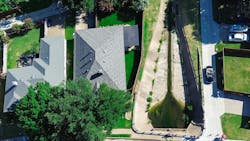This summer, the U.S. Enivronmental Protection Agency (EPA) selected four teams to establish the first generation of Centers of Excellence for Stormwater Infrastructure Technologies (CESITs). To explore these CESITs, we need to consider the three major work areas they will focus on, which is:
- Research on new and emerging stormwater control infrastructure technologies.
- Provide technical assistance to assist with the design, construction, and O&M of stormwater infrastructure.
- Collaborate to share findings and recommendations.
Research on stormwater control infrastructure technologies
Research will be needed to continue to drive innovations using technologies such as sensors and real-time controls as well as through new approaches to treatments that address not only traditional pollutants but emerging contaminants as well, such as using biochar filter media. Applied research supported by the CESITs to capture the efficacy of implemented products and practices will aid in the credibility of stormwater infrastructure to perform.
It is envisioned by EPA that these CESITs, “will be dedicated to new and emerging stormwater control infrastructure technologies as well as to developing funding approaches to address stormwater and sewer overflow needs.” While the CESITs are going to be focusing on technical research to drive innovations of the treatment and management of urban runoff, the vision for the Centers is to drive research in a more holistic manner, including funding and financing. This includes research in ways to find cost savings for communities seeking high-value investments in stormwater infrastructure as well as non-traditional funding and financing approaches to support the development of large-scale investments in green stormwater infrastructure.
Provide technical assistance for stormwater infrastructure
The Water Technical Assistance program (or “WaterTA”) led by EPA has clear benefits for the drinking water and wastewater sectors based upon the programming and products provided by this program thus far, but it has been less clear on how the stormwater sector can be supported through the WaterTA program. Through leveraging the CESITs, communities will be able to access technical resources needed to bring concepts to life. CESITs will help communities develop strategies for inspecting and maintaining stormwater infrastructure in a cost-effective manner to enhance the long-term performance of stormwater products and practices. Through direct engagement with stakeholders at the local level, CESITs will learn the goals and preferences of community members and integrate elements to meet these goals. A central CESIT purpose is to ensure that all communities, especially disadvantaged communities, can implement and maintain stormwater projects that are not only technically robust but also community-based.
Collaborate to share findings and recommendations
CESITs will work to share their findings, outcomes and outputs between each other and across the landscape of 7,500 regulated MS4 communities throughout the country. This will be accomplished through online and in-person trainings, holding workshops and delivering presentations at local, regional and national stormwater-oriented conferences. Documents such as fact sheets, reports and presentation materials generated by the CESITs will be located within a national clearinghouse that will be free to access and searchable.
Conclusion
The first mention of the creation of stormwater COEs in Federal legislation was in 2009 by Rep. Donna Edwards (D-MD), who introduced this concept in the Green Infrastructure for Clean Water Act of 2009, but it was not voted on in that Congress. Legislation proposing these COEs has been included in each Congress since that time, but it was never voted on or passed until it was brought into the Infrastructure Investment and Jobs Act (IIJA) in 2021. To say that this was a long time coming is an understatement, but it is finally here, and we look forward to the positive and meaningful impacts these Centers will have on the stormwater sector.
About the Author
Seth Brown
Seth Brown has over 25 years of experience in the water sector and is the Principal and Founder of Storm and Stream Solutions, LLC, a consulting firm providing a range of services from policy and alternative project delivery analysis in the stormwater sector to facilitation and training services focused on stormwater topics. He was the Director of Stormwater Programs at the Water Environment Federation from 2010-2015 and is currently the Executive Director of the National Municipal Stormwater Alliance, which is a 501.c.3 representing stormwater-focused organizations in 24 states across 9 of the 10 U.S. EPA regions with a network that is comprised of over 4,000 MS4s.
Seth has a Ph.D. in civil engineering from George Mason University with a research focus on socio-economic modeling of incentive-based investments of green stormwater infrastructure on private properties. He leads courses in Green Infrastructure and Innovative Water Partnerships at Virginia Tech and the University of Maryland at Eastern Shore and is a licensed professional engineer in the state of Maryland.


